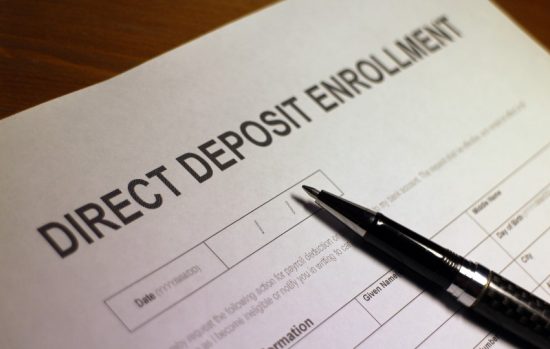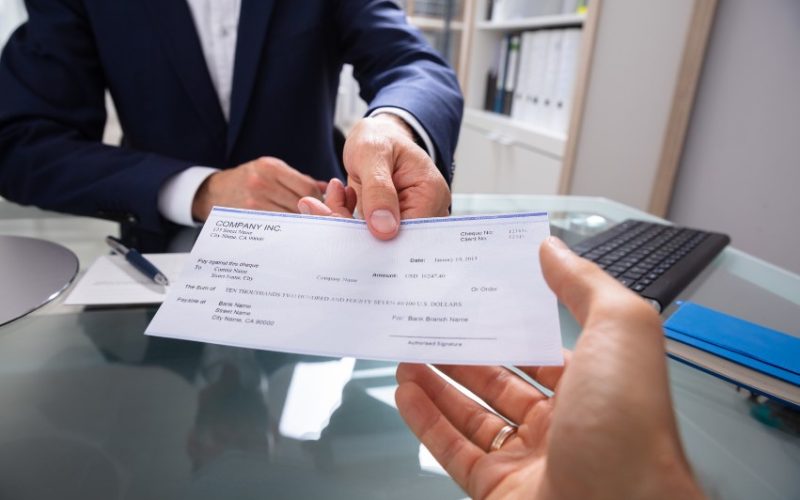Introduction
Are you trying to transfer money online or set up automatic bill payments in Canada? If so, then you’ll need to know what a routing number is. A routing number is a unique nine-digit code used by financial institutions in Canada to identify and route funds between banks during transactions. Understanding the structure and format of routing numbers, as well as how they are used, can help make your banking experience smoother and hassle-free. In this blog post, we will explore what a routing number is in Canada and provide tips on how to find it when you need it. So let’s dive right into the world of Canadian banking!
What is Routing Number in Canada?

A routing number is a unique nine-digit code that identifies a particular financial institution in Canada. It’s also known as the transit or bank code and is used to process electronic transactions between banks, such as direct deposit, wire transfers, online bill payments, and more.
Each routing number has three parts: the first five digits represent the financial institution, the next two digits identify the branch where your account was opened, and the last two digits are for internal use by your bank.
Routing numbers can be found on checks issued by your bank or through online banking portals. They’re essential for ensuring that funds are transferred quickly and accurately between accounts without any errors or delays.
It’s important to note that each financial institution may have multiple routing numbers depending on their location and type of transaction. Therefore it’s crucial to ensure you have the correct routing number before initiating any transactions.
In summary, understanding what a routing number is and how it works is vital if you want to conduct seamless electronic transactions with Canadian banks.
Structure and Format of Routing Numbers
Routing numbers in Canada are made up of nine digits that help identify the financial institutions involved in a transaction. These numbers are structured based on a specific format that is universally recognized across all banks and credit unions operating in Canada.
The first four digits of a routing number indicate the financial institution where an account is held, while the next five digits represent the individual branch location of that institution. This combination allows for quick identification and sorting of transactions between different banks or branches within one bank.
It’s important to note that each financial institution will have its unique routing number despite following this universal structure. This ensures accuracy when processing transactions and helps prevent mistakes such as funds being sent to the wrong place.
Furthermore, routing numbers can be found on various documents related to your banking information like checks or bank statements. It’s essential to double-check these details before initiating any transaction so you can avoid errors or delays with your payments!
The Different Types of Routing Numbers

Routing numbers are used to identify a financial institution in Canada, and there are three different types of routing numbers used by banks across the country. These include branch transit numbers, electronic fund transfer (EFT) routing numbers, and Society for Worldwide Interbank Financial Telecommunication (SWIFT) codes.
- Branch transit numbers are nine-digit codes that identify a specific bank branch where an account is held. They’re typically used for transactions within Canada such as direct deposit or pre-authorized payments.
- EFT routing numbers are also nine digits long and they’re used for electronic funds transfers between Canadian banks. These transfers can be done online or through an ATM, and they allow for quick and easy money transfers between accounts.
- SWIFT codes are eight or eleven characters long and they’re used primarily for international wire transfers. This system is widely adopted around the world to help facilitate cross-border transactions.
It’s important to note that not all banks have SWIFT codes since it’s mainly focused on international banking needs. Branch transit number information may sometimes be required if you need to receive funds from someone within Canada who has your banking details but does not know your full account number with your bank.
How Routing Numbers are Used?
Routing numbers are used by financial institutions to identify where a transaction is coming from and going. They play a crucial role in the processing of electronic payments, such as direct deposit, bill payments, wire transfers, and other types of online transactions.
- When you provide your routing number along with your account number to an institution or company for payment purposes, they use this information to route the funds directly into your bank account. The routing number ensures that the money goes directly to the correct financial institution and specific branch associated with your account.
- Routing numbers can also be used when transferring money between bank accounts at different banks. In this case, both banks will use their respective routing numbers so that the transfer gets routed correctly.
- It’s important to note that while routing numbers may seem like a small detail in banking transactions, providing incorrect information could result in delays or even lost payments. Ensuring accuracy when providing routing information is crucial for smooth transactions.
- Understanding how routing numbers are used can help you navigate electronic banking with confidence and ease.
How to Find Routing Number?
Routing numbers are essential pieces of information that allow financial institutions to process transactions quickly and efficiently. If you need to find your routing number, there are a few different methods you can use.
- The easiest way to locate your routing number is by looking at the bottom left corner of one of your checks. The first nine digits on the left side represent the routing number for your bank or credit union.
- If you don’t have any checks available, you can also log into your online banking account and check for the routing number there. Most banks will display this information prominently on their website once you’ve logged in.
- Another option is to contact customer service for your financial institution. They should be able to provide you with your routing number over the phone or through email.
- If all else fails, try performing an online search using keywords like “routing number” and “your bank’s name.” There are many websites dedicated to providing this type of information, so chances are good that you’ll find what you’re looking for with a quick search!
Do Routing Numbers Ever Change?

Routing numbers are unique identifiers assigned to financial institutions in Canada. They are used for various purposes, including direct deposits, wire transfers, and bill payments. But do routing numbers ever change?
Yes, they can. Financial institutions may merge or undergo acquisitions that could lead to changes in their routing number. Moreover, a bank may decide to restructure its operations or open a new branch in a different location. In such cases, the bank may opt to get a new routing number for the newly established branch.
When there is any change made by banks or credit unions regarding their routing numbers – they must notify their customers about these changes through official channels like emails or mailers.
It’s important always to double-check that you’re using the correct routing number before making any transactions with your financial institution. The wrong routing number can result in delays and even failed transactions.
While it is not common for routing numbers to change frequently, it does happen due to mergers and restructuring within financial institutions. Always stay up-to-date on any changes affecting your bank’s operations so you can ensure smooth transactions without any disruptions caused by wrong information usage-related issues!
Conclusion
Routing numbers are an essential part of the banking system in Canada. They help to ensure that financial transactions are completed accurately and efficiently. As we have seen, there are different types of routing numbers used for various purposes, including wire transfers and direct deposits.
Finding your routing number is a straightforward process that can be done easily through online banking or by contacting your bank directly. It’s important to note that routing numbers may change over time due to mergers or acquisitions, so it’s always best to double-check before initiating any transactions.
We hope this article has helped you understand what a routing number is in Canada and how it works. With this knowledge, you’ll be better equipped to manage your finances and carry out secure transactions with confidence!
FAQs on what is routing number in canada
1. What is a 9-digit routing number for Canada?
000127601 is the routing number for Canada. The format for electronic payments and transfers is this routing number, which consists of nine digits. When a routing number is intended for MICR-encoded paper payments, it can alternatively be written in the “Transit Number – Institution Number” format.
2. Is routing number same as transit number?
The routing number is also known as an ABA/ACH number. It is the nine-digit number that identifies the bank’s location and transit information.
3. How do I write my routing number Canada?
Routing numbers for electronic fund transfers have a leading zero, the institution number, and the branch number without dashes.
4. Which is the routing number on cheque?
On a cheque, the first set of numbers in the lower left corner is the routing number. The character symbol that appears around the nine-digit routing number is not a part of the number itself.










